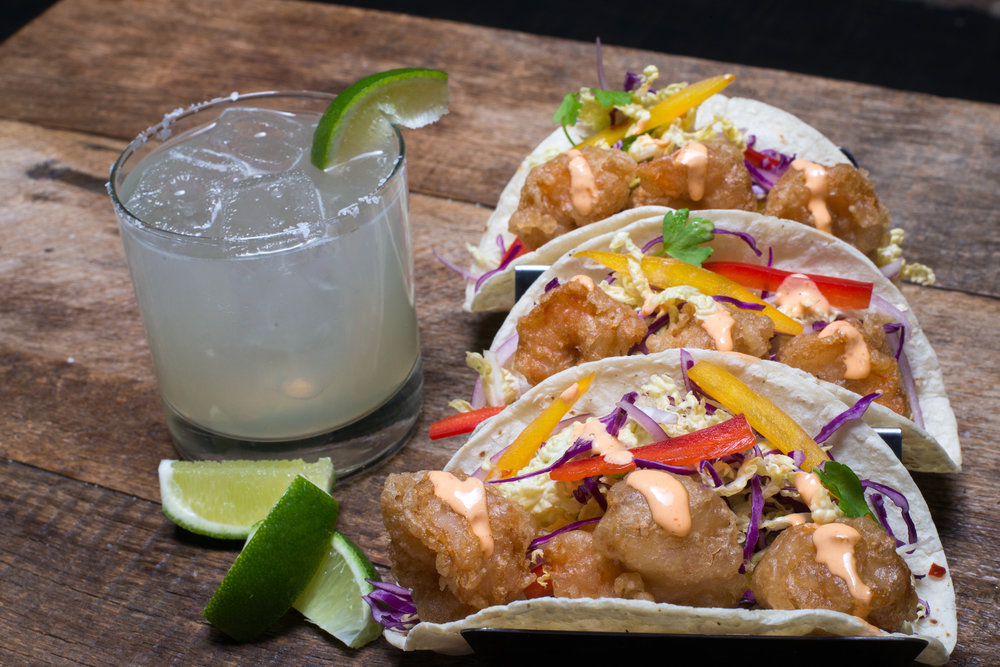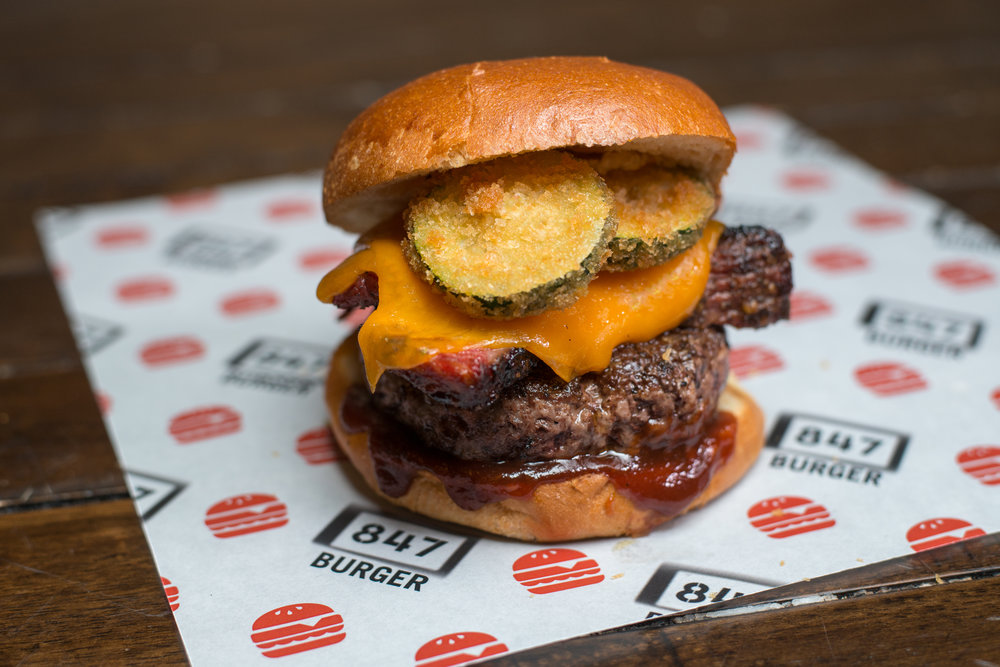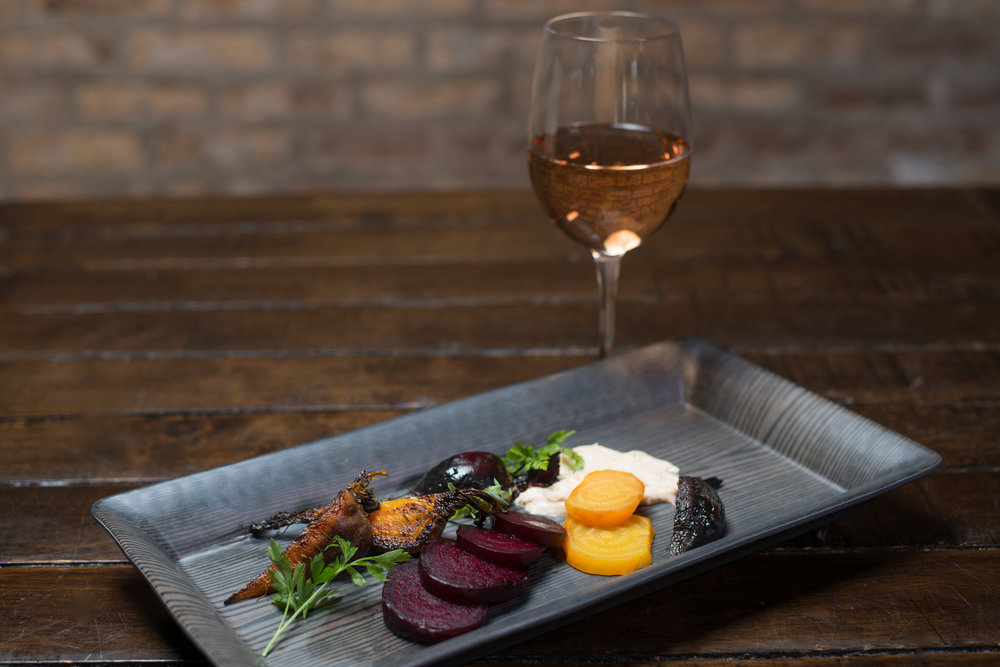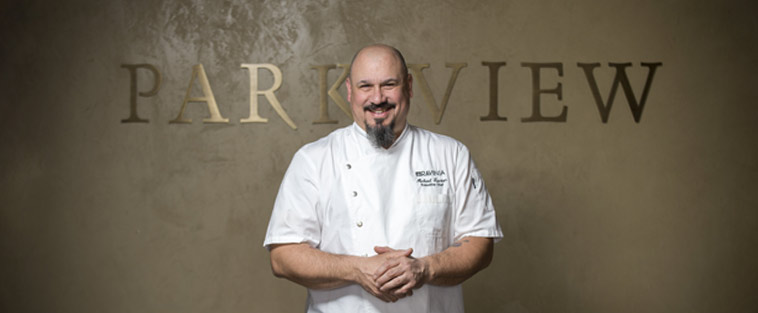By Ari Bendersky
For many people, catching a show during Ravinia’s summer season is all about setting up blankets and tables, spreading out a picnic with wine and cheese, and hanging out with friends on the lawn while taking in a night of great music. But for many more, the Ravinia experience includes visiting one of the handful of restaurants onsite. With the 2018 concert season, which features a different act nearly every night through September 16, Executive Chef Michael Tsonton is introducing what he calls “micro-seasonal” dining, highlighting locally sourced ingredients on a continually fresh menu, keeping in line with the musical bills.
Even more exciting, Chef Tsonton will do this all with some brand-new concepts within the rejuvenated Dining Pavilion. On the ground floor, the new Lawn Bar and its two full bars will also serve small plates and entrées, and the Ravinia Market will feature five hot stations with different cuisines, as well as grab-and-go food and drinks. And the second floor is now home to both reservation-driven restaurants: the new Tree Top and its outdoor, covered Porch will offer a micro-seasonal prix-fixe menu in serve-yourself style, and the popular Park View will feature a refreshed menu. Ravinia Magazine spoke with Chef Tsonton about the new spaces, what makes him excited and his approach to seasonal cooking.
You’re donning the jacket of Ravinia Executive Chef this year, but you’ve already been in the kitchens for a year.
That’s right. I started in April 2017, cooking alongside Ali Saboor, who was Executive Chef here for three years, so I already have one Ravinia season under my belt.
Tell us about all the new dining concepts—how many are there?
There’s one that’s brand-new, the walk-up Lawn Bar, and there’s a contemporary, reimagined version of our “chef’s table” concept, and that’s called Tree Top. The Ravinia Market is flush with fresh ideas as well, so our grab-and-go concessions market is about 40 percent larger.
 What was the reason for this rejuvenation of the Dining Pavilion?
What was the reason for this rejuvenation of the Dining Pavilion?
One problem that arose with the original Dining Pavilion was that it could seem like a “house on the hill.” People would come and think that’s where only the major donors could go. It didn’t seem like the different spaces were open and available to the regular concertgoer. And we weren’t making full use of one of its greatest assets, the vistas from the second floor. What was the private banquet hall there is now Tree Top, so now we have two restaurants with a view, and both have alfresco seating for full enjoyment of the summer—and if the weather doesn’t cooperate, they can be covered. Plus the ground floor has also been opened up, so it’s all accessible and visible to everyone. All the walls between the lawn and the Dining Pavilion are now gone. This is where the Lawn Bar shines—there’s a ton of patio seating and it basically opens right into the park. It says, “Come in and visit. We want to get to know everyone.”
Will it be open during the concerts?
Tree Top and Park View will close when the music starts every night, but the Lawn Bar is our hip, casual, social restaurant and bar—so we’re keeping that open for a while during Pavilion and Martin Theatre concerts. When the CSO or other classical artists are playing, the Lawn Bar will be open through intermission, and for non-classical concerts it’ll be open until about an hour before the show ends. Tree Top and the Ravinia Market are closed for Martin Theatre concerts, and the whole building is closed if there’s only a Bennett Gordon Hall concert.
 What are some of the new bites we can get in the Dining Pavilion?
What are some of the new bites we can get in the Dining Pavilion?
Ravinia regulars will notice that the Market has a few new counters. One is a real smokehouse, so I’m calling it Smokehouse 1904, after the year Ravinia opened. It’ll be Texas barbecue with smoked meats and side dishes. We also have a new station devoted to hot paninis and fresh sides and deli salads, so it’ll be a go-to place to fill out your picnic. You can choose from 10 to 12 side dish offerings as well as get fresh pressed sandwiches. The taco and pizza stations will still be there, with some new flavors. But you won’t want to miss our new signature burger at the grill—the 847, named for Ravinia’s area code—it’s 8.47 ounces of ground chuck, and it has barbecue brisket with melted cheddar and fried pickles. It’s like 12 ounces of meat. The Market will have some new grab-and-go too, like upscale cheese boards from Great American Cheese Collection in Chicago. We’ll also have flights—white and red wine and two different beers, so four different flights of cheese to match the drinks. It’ll come with dried fruits, nuts, and crackers.
 Upstairs, the Park View’s space hasn’t changed as much as its menu, but it does have a new heated awning outside. In Tree Top, the “chef’s tables” will continue to feature global cuisine, but the menu evolves all the time, following the micro-seasonal idea. It’s $35 per person and you can partake of whichever dishes appeal to you as many times as you want.
Upstairs, the Park View’s space hasn’t changed as much as its menu, but it does have a new heated awning outside. In Tree Top, the “chef’s tables” will continue to feature global cuisine, but the menu evolves all the time, following the micro-seasonal idea. It’s $35 per person and you can partake of whichever dishes appeal to you as many times as you want.
Can you tell us more about this “micro-seasonal” concept you’re introducing in the Dining Pavilion?
That’s a new thing. Overall, the cooking is what I’m also calling “seasonal summer,” and we’re boiling it down into micro-seasons. We open June 1, so right then you’ll see a lot of asparagus, English peas, fiddlehead ferns, all those green vegetables we love from spring. But when they’re gone locally, they’re gone. When the crop is over, we’re moving on. We’ll buy a lot of things from local farms. When tomatoes are everywhere in August, you’ll see a lot of tomatoes. Same with sweet corn, baby beets, and more.
Will any of the new food concepts be available in the actual park or just in the Dining Pavilion?
Outside of ice cream, coffee, and drinks, everything is in the Dining Pavilion. But we’ll be serving ice cream from multiple carts around the park this year; we won’t be using the Carousel anymore. It just wasn’t practical to keep serving the lines from a round building.
What about the cocktail and wine programs, who is responsible for those?
Daniel Freedman, the assistant director of the restaurants, is a certified sommelier. We’ve got new cocktails and wines going in, and we are bringing in a lot of craft beer on draft this season too. There’s going to be a bigger presence of popular beers.
Why should return guests to Ravinia be excited about the new Dining Pavilion?
There’s a lot more to offer and there’s more accessibility. And wherever you go you can get your drink in a to-go cup and take it into the park. We have a third restaurant now, the Lawn Bar, which will be casual with regional American cooking like lobster rolls, a bucket of mussels, barbecue, and more. I broke it down into regions and styles: New England, Midwest vegetables, Cali–Pan Asian, Tex-Mex, and Deep South—we’re also playing with this regional American thing as part of the micro-seasonal idea. I hope people will appreciate my cooking style. The chef who I replaced was brilliant, but his passion was Mediterranean, so the venues had a heavy Mediterranean feel. I’m trying to give our restaurants a more American feel.
 How would you describe your culinary style?
How would you describe your culinary style?
“Less is more.” I was raised with traditional French cooking style and came up when guys still shouted at you in languages you didn’t understand. This was before there was music in the kitchens, tattoos, and short sleeves. It was old school. One of the things I picked up from my mentors, like Jean-Georges Vongerichten, is you don’t need a ton of things to make a presence on a plate, but you do need focused flavors. I want you to come here and see what you just saw at Green City Market. Sensibility and simplicity is a big thing for me in my cooking.
You really got your start cooking at Katzinger’s Delicatessen in Columbus, OH. How did that shape the chef you are today?
It was the first time I was exposed to a kitchen that made everything from scratch. Everything that seemed simple still took a long time to make, like chicken stock made daily, matzo balls rolled out daily, etc. We would bake bread all day and all of it was hand-sliced. We just slung food out all day with a line out the door. I was 21, 22 at the time, and I would work a 10-hour day and the place was never slow. The owners always thanked me for being there and for my hard work. I learned a lot about management and how much people matter. It made a big impression on me. To this day my most valuable assets are the people who are next to me: my dishwashers, prep cooks, all of them.
What’s your ideal dinner to cook at home for friends or family?
I’m a master of the one-pot dinner. The other night, my oldest daughter, who is 18, came over and I met her boyfriend for the first time. I made a pork loin roast with vegetables and chunks of sausage and bacon, and it roasted in one pan. I served a big salad with crusty bread and butter. When you cook for living, you like to cook for your family but not spend all the time cleaning. The perfectly roasted chicken is a big deal in my house.
What was one of your most memorable or “a-ha” meals you had in your life?
The most memorable meal … I think I was 24, and my girlfriend and I ate at Lutèce. I saved all my money for weeks and I had like $189.70—every penny I had with me. Mind you this was in the early ’80s, the go-go ’80s, with lots of money flying around. They walked us downstairs through the parlor to the main dining room. The whole place stopped and looked at us. They gave us the crappiest table in the restaurant. My menu had prices and hers didn’t. They gave us a huge wine list, and that was the first time I ever experienced continental service, so there was a different person for every task. They gave us each a roll and I knocked mine off the table, but I picked it up before anyone noticed. But later the chef, André Soltner, came out and I got to shake his hand. In that moment, I knew I wanted to be a chef. It was such a cool experience. ▪
Ari Bendersky is a lifestyle journalist specializing in food, wine, spirits, and travel who was the founding editor of Eater Chicago and has written for the New York Times, WSJ magazine, Men’s Journal, Wine Enthusiast, and Crain’s Chicago Business. A Highland Park native, he has seen countless shows at Ravinia and has even been on its stage twice—for his middle- and high-school graduations.

